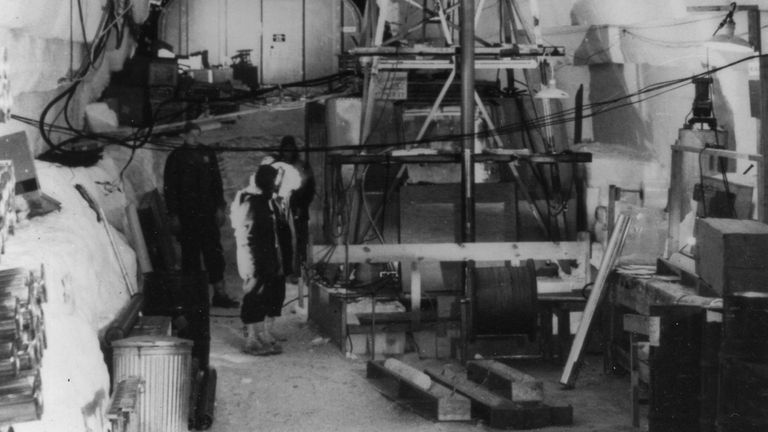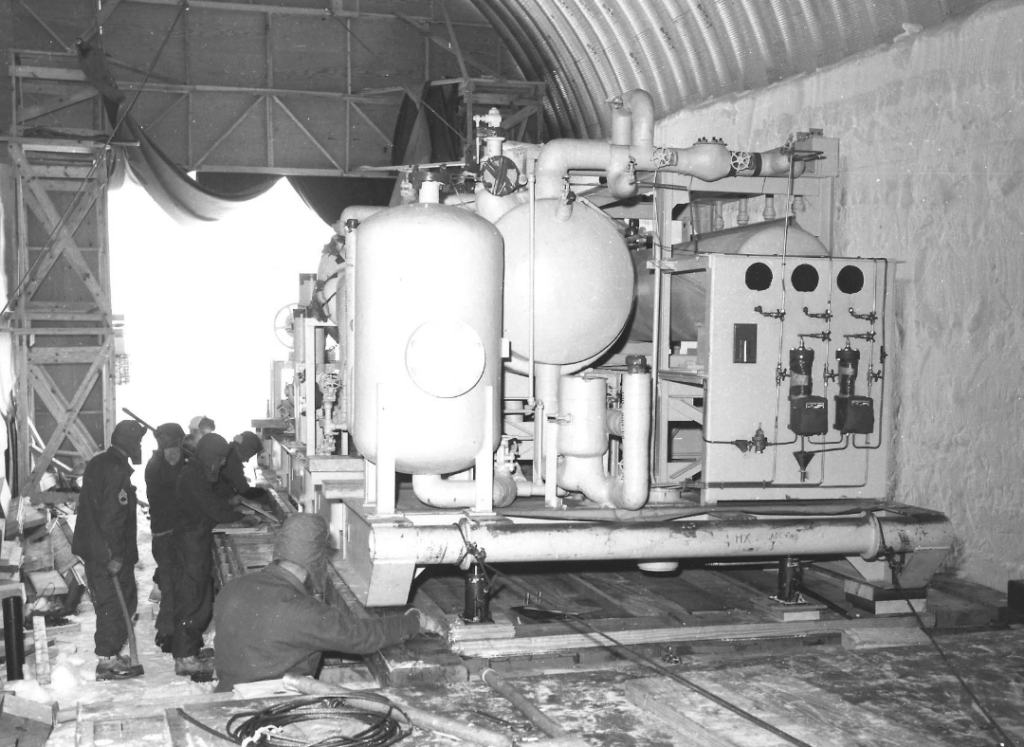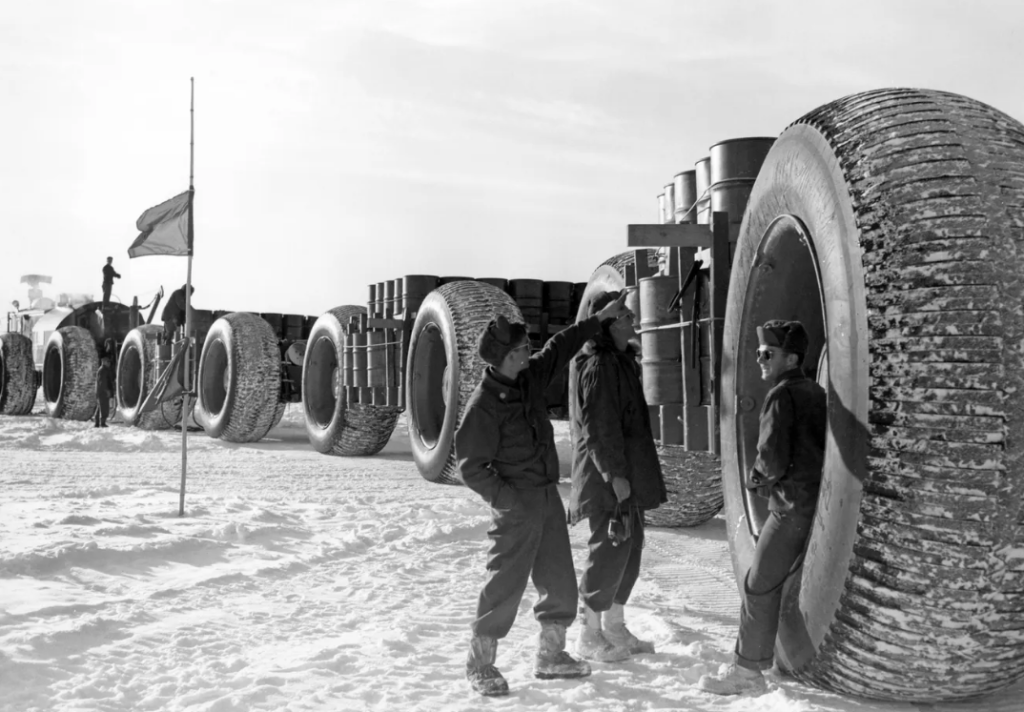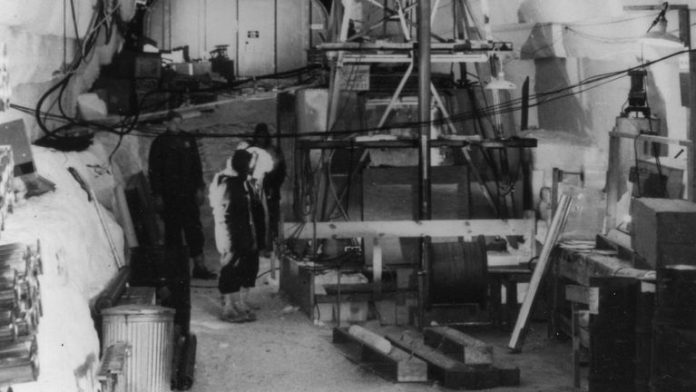
“What secrets does the ice still keep?” That question, asked by historian Kristian Nielsen in Science, has never rung so true as NASA’s recent radar surveys have pulled back the frozen lid over Greenland’s Camp Century. This secret Cold War camp, buried for decades under moving snow, is suddenly highlighted once more giving the world a key insight into the dreams, fears, and unforeseen actions of past times.
With updated radar images and increasing climate worries, Camp Century is both an engineering wonder and a cautionary tale. The history is as much about the competition for military dominance as it is about the unexpected environmental and political challenges now emerging with the thawing Arctic. Here are nine surprises that shed light on the lasting fascination and multifaceted legacy of this icy fortress.

1. NASA’s High-Tech Rediscovery
In April 2024, NASA’s Gulfstream III aircraft, armed with sophisticated radar, imaged the Greenland ice sheet and uncovered stunning images of artificial structures hidden beneath the surface. The technology, which is called UAVSAR, enabled scientists to separate the natural ice structure from the unmistakable geometric shapes of the tunnels and chambers. In the words of Mike MacFerrin of CIRES, “The radar shows smooth layers of snow and ice until reaching the camp.” Then the signal becomes murky. We don’t yet have sufficient resolution to chart precisely what all is on the bottom there, but the shape is evident. This rediscovery has rekindled international interest in a place believed to be lost to history.

2. The Emergence of an Ice-Buried City
Camp Century was planned in 1959 as a demonstration of Arctic engineering, constructed 200 kilometers inland from Greenland’s coast. The U.S. Army Corps of Engineers cut a system of tunnels that spanned almost two miles, with living accommodations, laboratories, a chapel, and recreational facilities. Officially, it was a research station, but secretly much more. The building and functioning of the base, buried beneath as much as 115 feet of snow, was a daring experiment in science and military tactics.

3. Project Iceworm: The Cold War’s Arctic Gambit
Under the guise of polar science, Camp Century was the site for Project Iceworm a secret proposal to deploy several hundred nuclear missiles in underground tunnels under the ice and target them at the Soviet Union. So secret was the project that even Denmark, Greenland’s overlord, was not informed. Eventually, the uncertain mobility of the ice thwarted the plan, and Project Iceworm was cancelled after just eight years. Nevertheless, the bravado of the plot is a reminder of Cold War canniness and suspicion.

4. Nuclear Power in the Arctic
Centered at Camp Century was the PM-2A, the world’s first transportable nuclear reactor. This small plant provided the base with both heat and electricity to serve a community of as many as 200 residents. In 1967, the base was closed, and the reactor core was drained but not the radioactive coolant or other harmful substances. As nuclear engineer Robert Hayes told ABC News, “The spent fuel the material containing the components with the longest half lives was removed when the reactor was decommissioned.”

5. A Toxic Legacy Buried in Ice
Camp Century’s closure took more than memories away. Scientists estimate the site holds well over 200,000 liters of diesel fuel, 240,000 liters of wastewater, PCBs, and low-level radioactive waste. These toxins, distributed over an area the size of 100 football fields, were assumed to be securely buried by continuous snowfall. However, as climate scientist James White noted, “This stuff was going to come out anyway, but what climate change did was press the gas pedal to the floor and say, ‘it’s going to come out a lot faster than you thought.”

6. Climate Change and the Risk of Remobilization
Latest research warns that melting at Camp Century may surpass snowfall as early as 2090, starting a process that would ultimately open and release the waste underground. PCBs and other toxins may move through meltwater into the ocean and endanger Arctic food chains and ecosystems. Although the danger is not soon to come, the long-term consequences are far-reaching. As quoted by Miren Vizcaíno of Delft University, “It is very good that we have the knowledge of what would happen if we don’t do anything.”

7. Political and Legal Uncertainties
The threat looming over pollution has caused fresh political tensions between Denmark, the United States, and Greenland. The minister of foreign affairs of Greenland, Vittus Qujaukitsoq, publicly called on Denmark to prepare for cleaning up the site and also to compensate locals. However, as political scientist Jessica Green explained, “The study identifies a big hole in the extant set of laws and rules we have to deal with environmental problems globally.” The responsibility for remediation is not solved, and it portends future international conflict.

8. Camp Century’s Scientific Contributions
Though it had its roots in the military, Camp Century produced ice core samples that revolutionized climate science. The cores indicated that Greenland used to have dense forests, and not only ice, and the data were immensely important for the history of Earth’s environment. According to William Colgan of York University, “Scientists at Camp Century took ice core samples providing climate data still cited in research today.”

9. Lessons for the Future
Camp Century’s rediscovery is a harsh reminder of the unintended effects of technological hubris. The base is a testament to Cold War engineering, environmental hazard, and the challenges of stewardship in the Arctic. With the world confronting climate change, the history of Camp Century highlights the necessity of careful monitoring, international collaboration, and moral prescience in dealing with the legacy of the past.
Camp Century’s frozen tomb features no longer as a Cold War secret it features as an active laboratory for the intersection of engineering, geopolitics, and climate change. As fresh radar images bring its tale back to the forefront, the world is again reminded that history’s hidden ambitions can come again in new ways, requiring both scientific alertness and global accountability.


